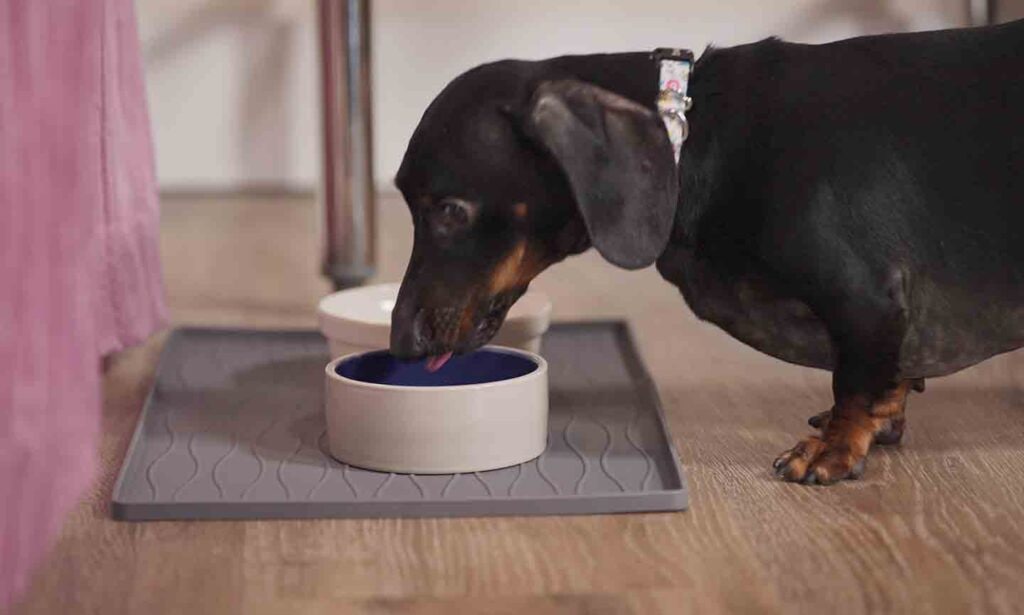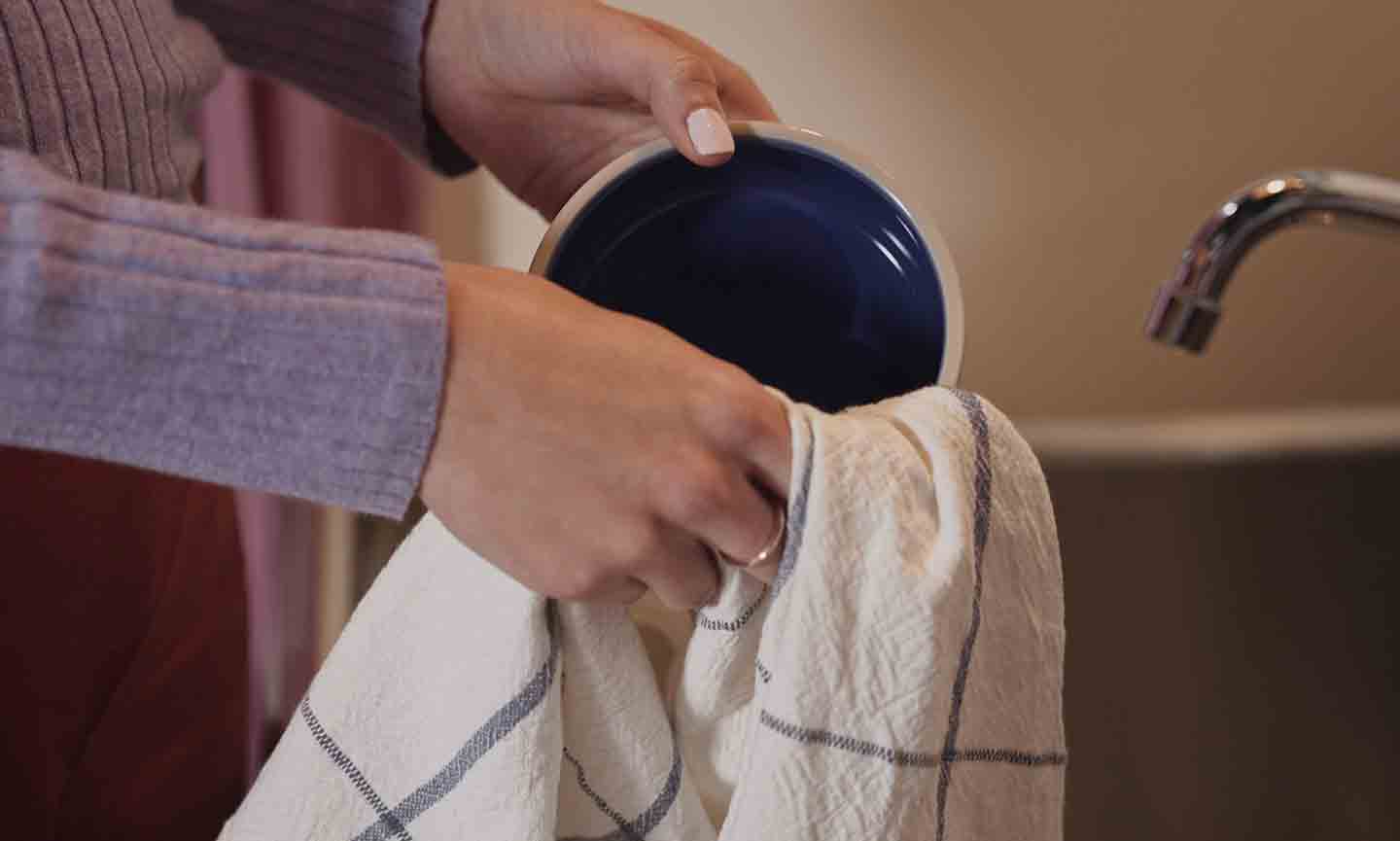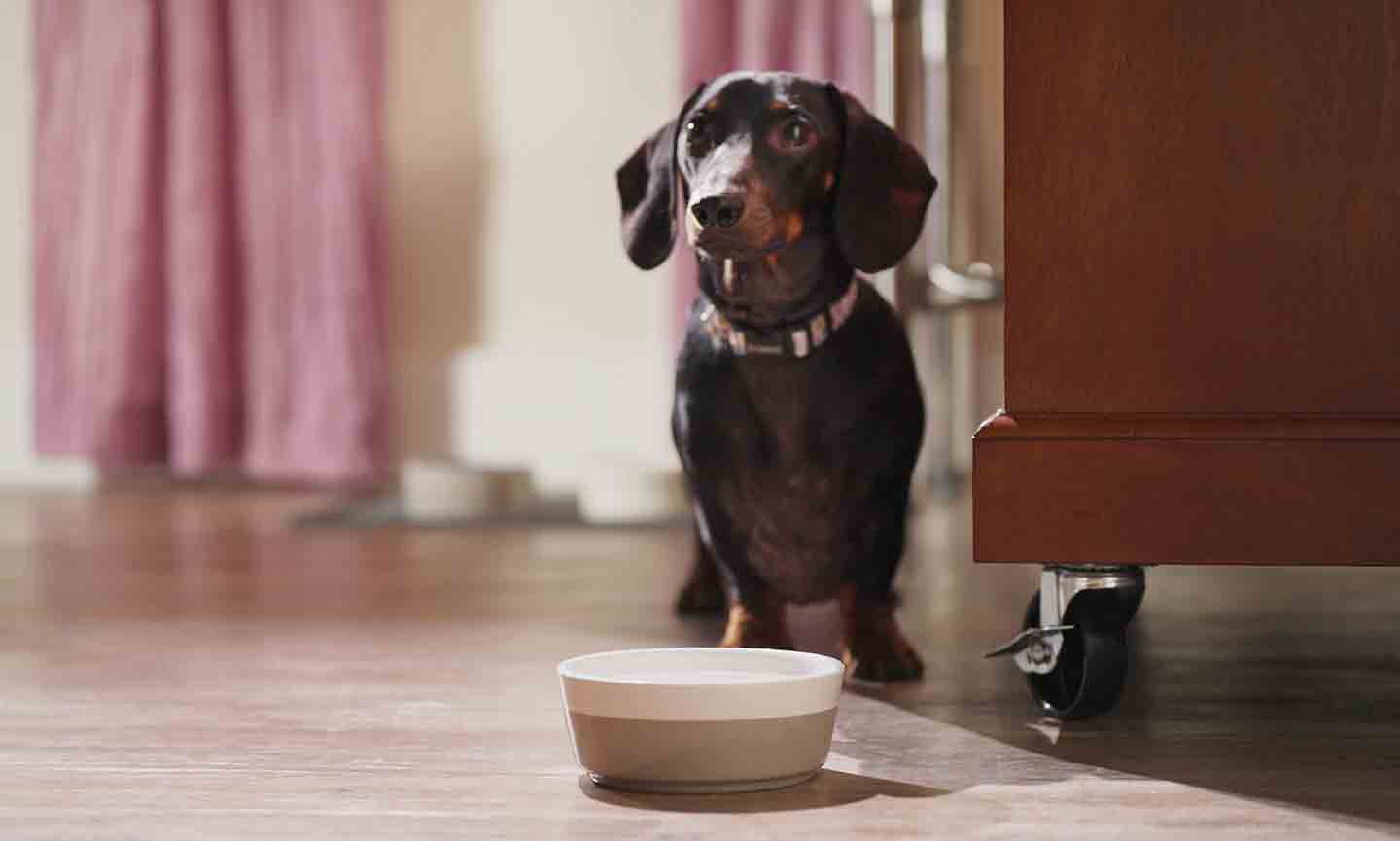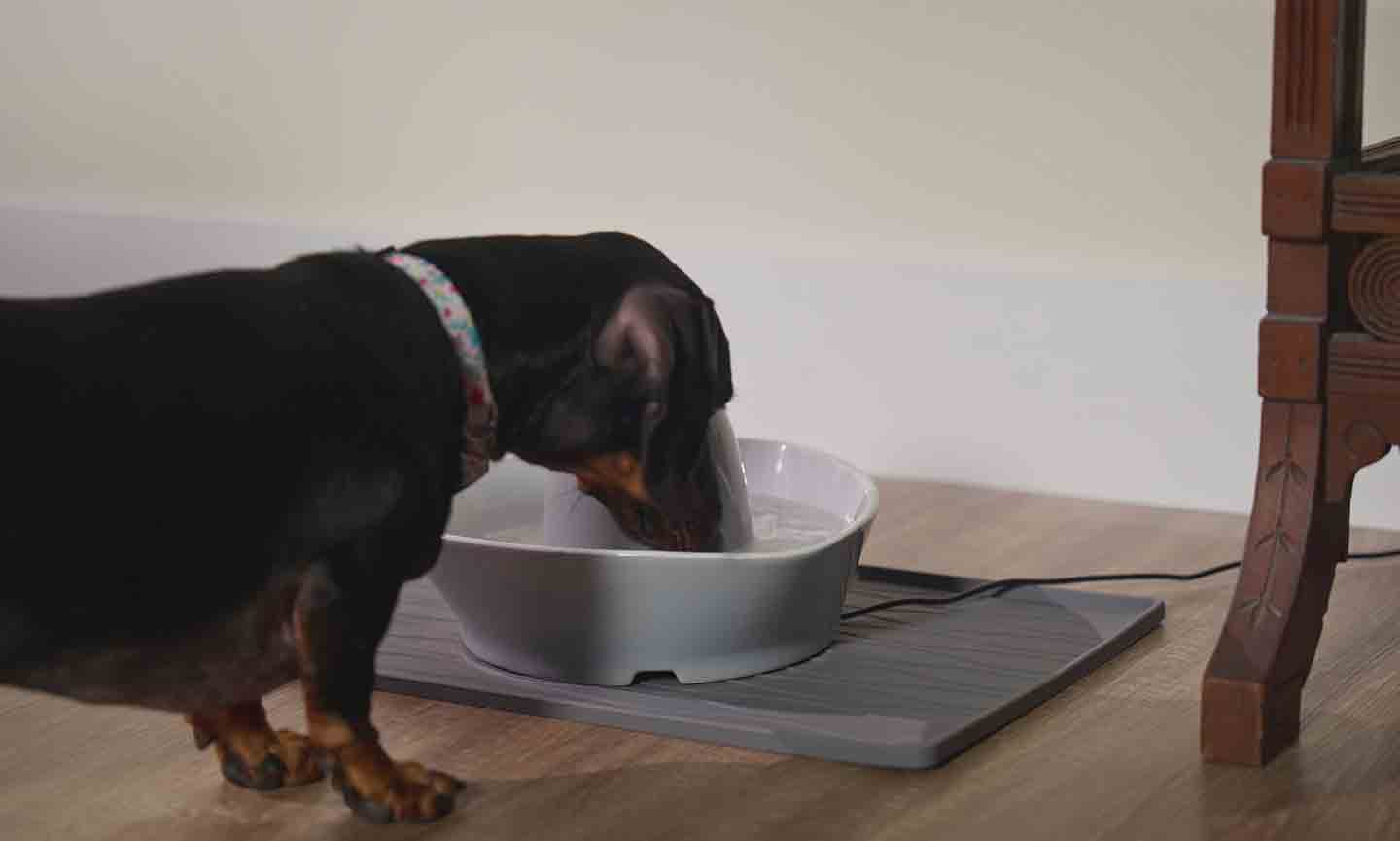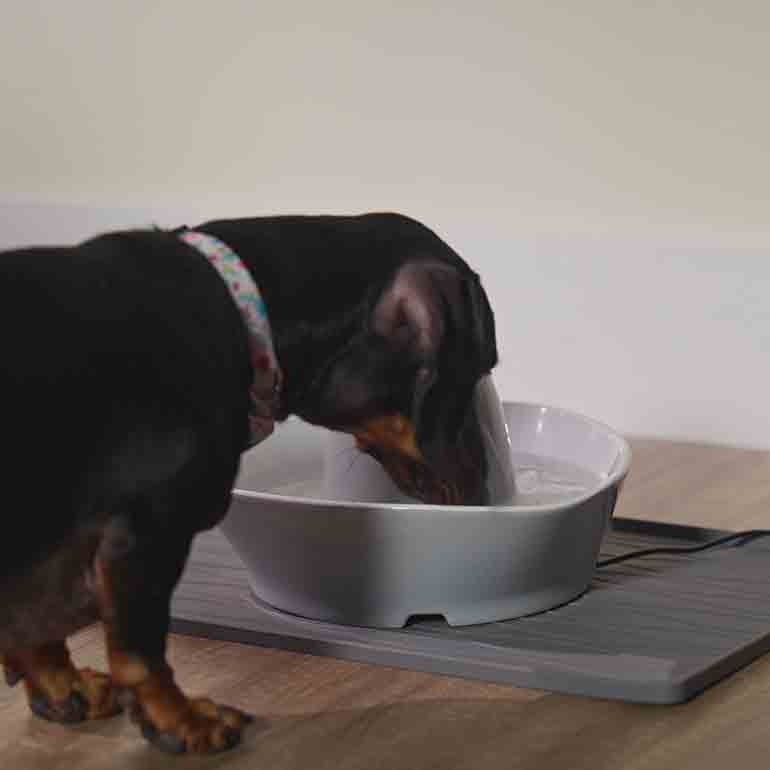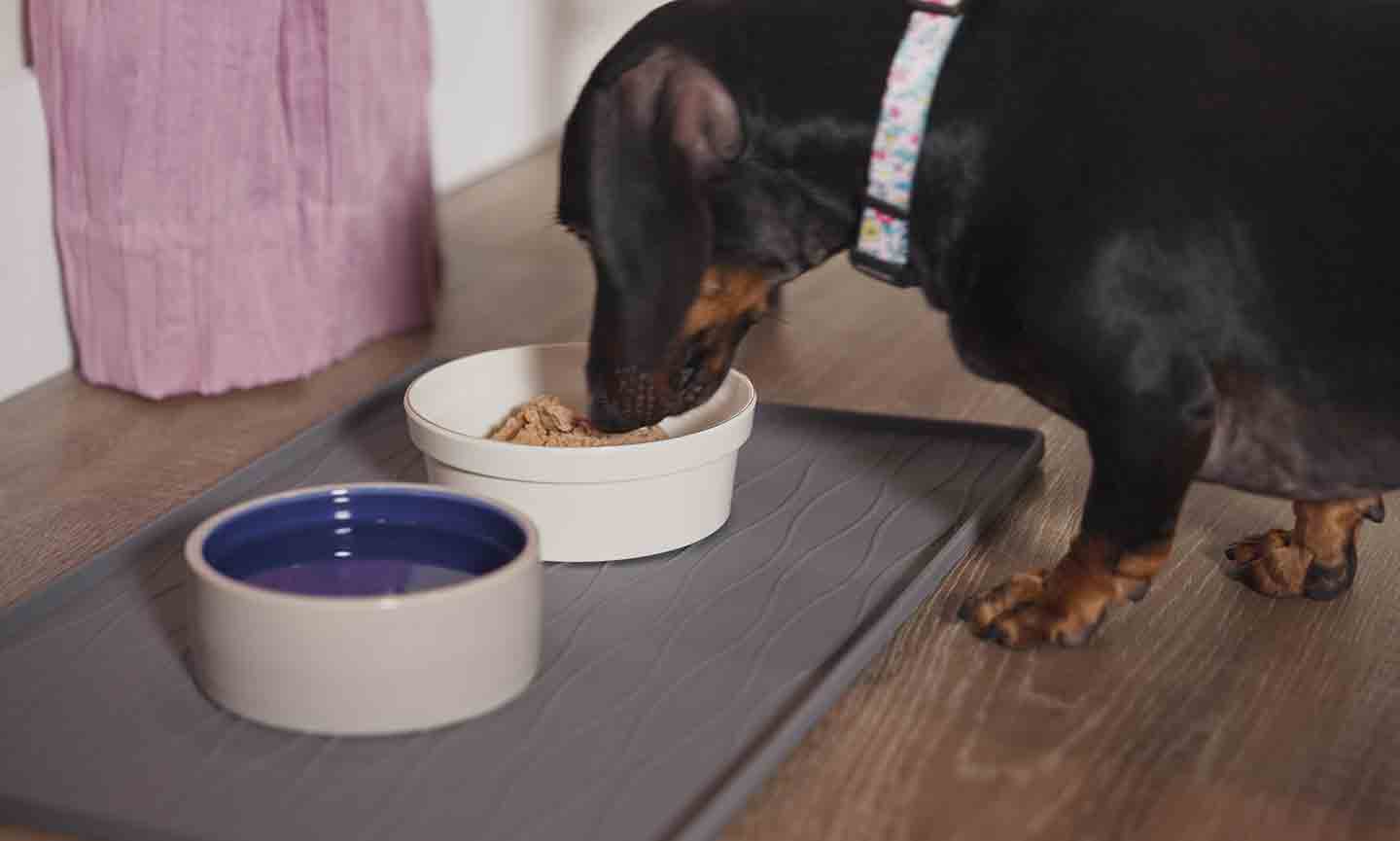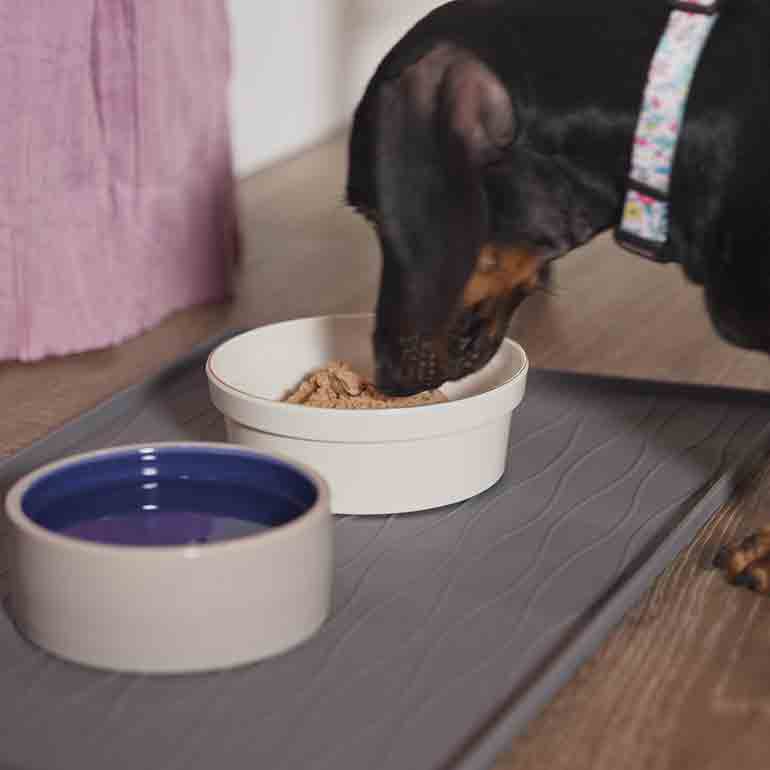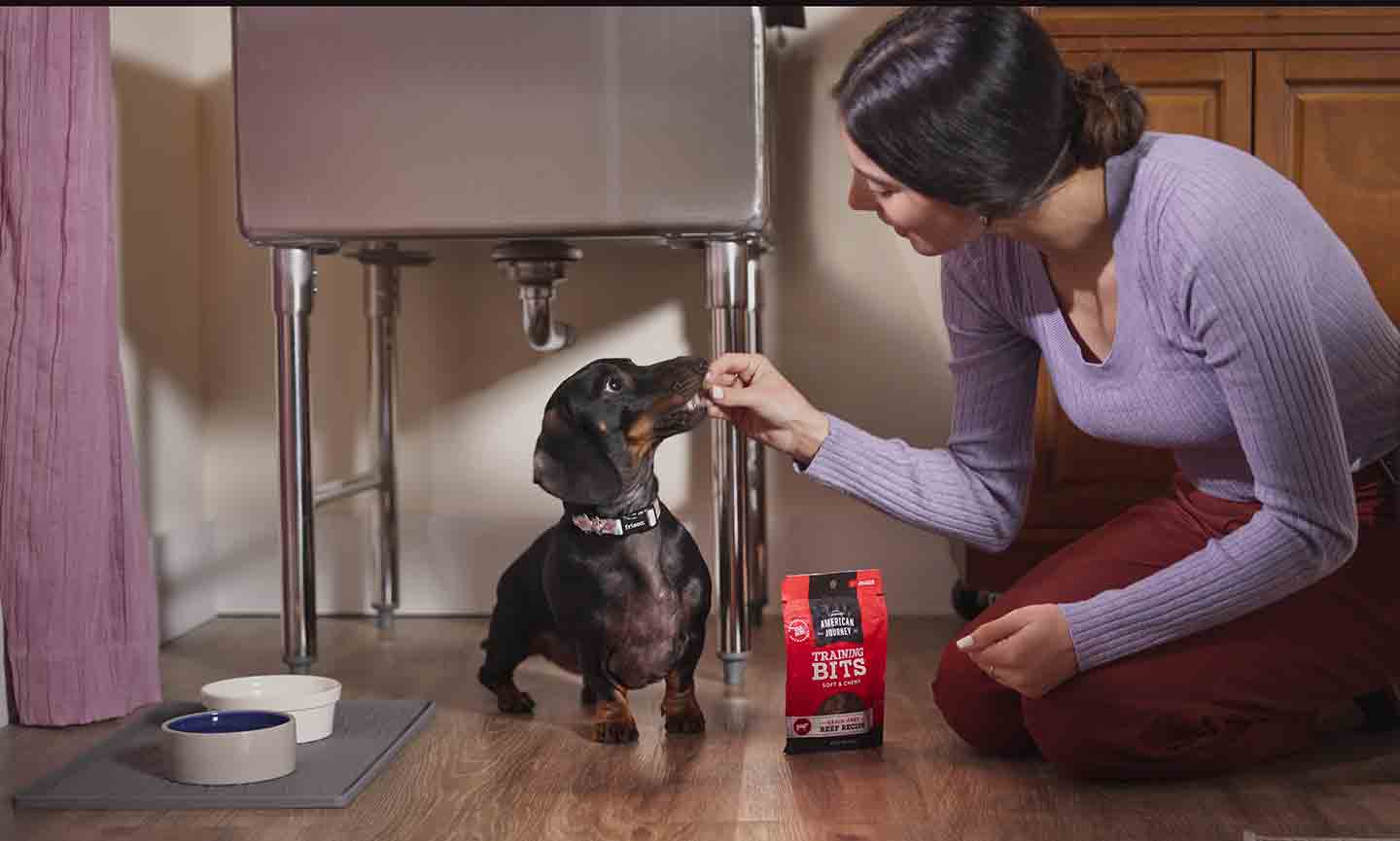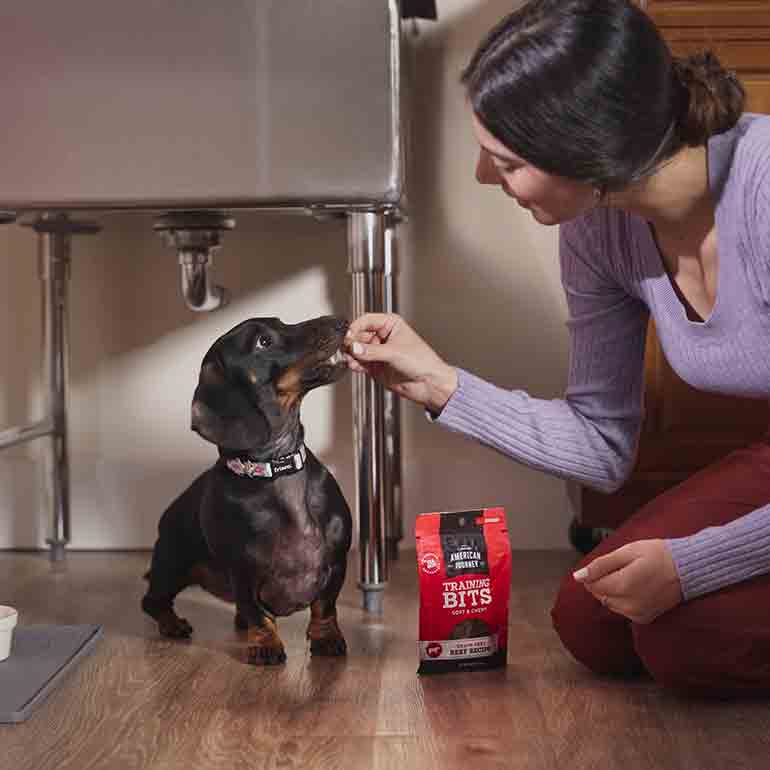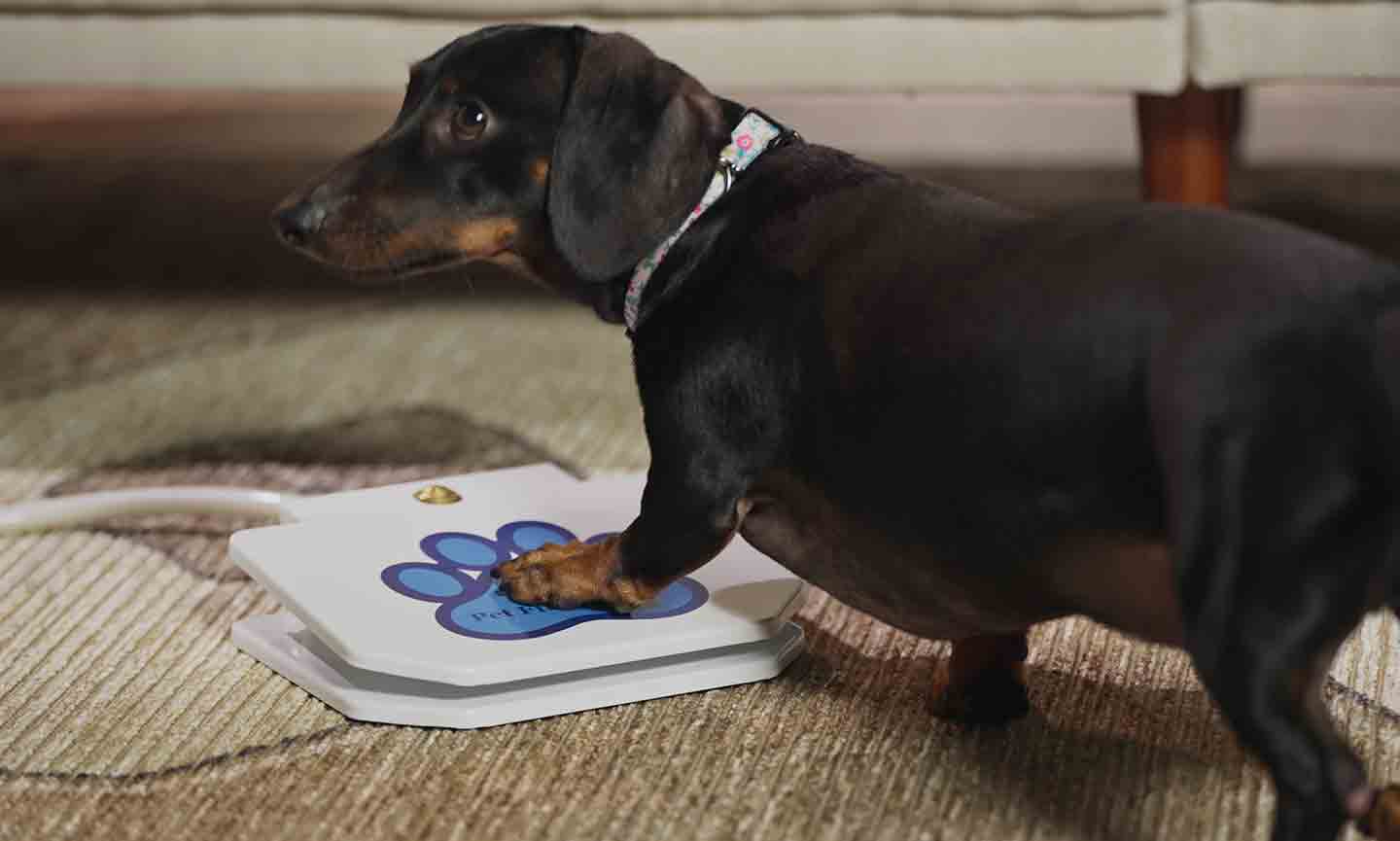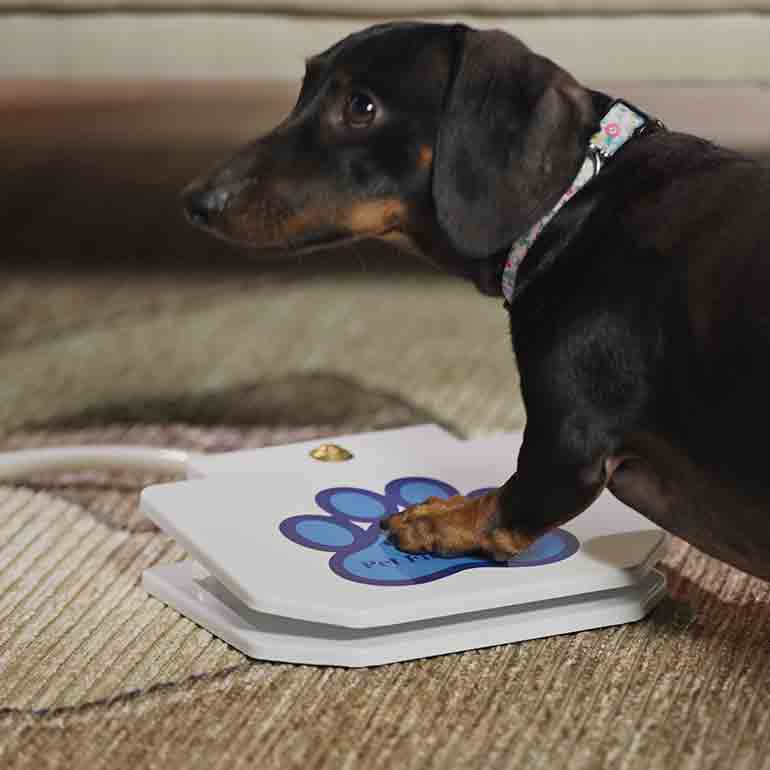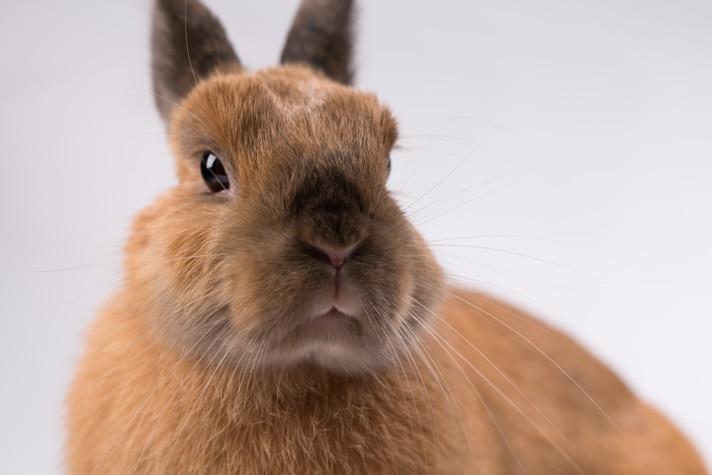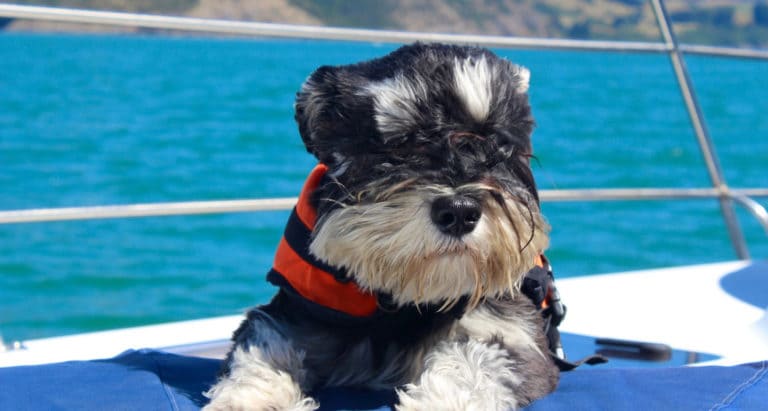There are four key health requirements for every pooch: tons of cuddles, plenty of exercise, tasty and nutritious dog food, and enough water to keep them hydrated. When it comes to water consumption, though, it can be tricky to know whether your pup’s getting the right amount. And in the event they aren’t drinking enough H2O, it’s important to troubleshoot the reasons why so you can remedy the issue.
In addition to ensuring hydration, water helps your dog regulate their body temperature, assists in nutrient absorption, fosters joint and muscle health, and even aids in urinary and digestive health. Ahead, we’re covering some common reasons why your furry friend may seem water-shy, how much water dogs should drink, and how to increase your dog’s water intake.
In This Guide
How Much Water Should My Dog Be Drinking?
Generally speaking, a dog needs 1 ounce of water per pound of body weight per day, says veterinarian Gavin Casper, DVM, managing director at Hometown Animal Hospital in Weston, Florida. “So, a five-pound dog should drink 5 ounces, a 50-pound dog should drink 50 ounces and a 100-pound dog should drink 100 ounces,” he explains.
This amount may differ slightly based on:
- Your dog’s activity level
- Your dog’s diet
- How much time they’ve spent outside
- Whether it’s a hot day
If your dog eats wet food, tends to lounge around more or the temperature’s cool, they may not need as much water. Conversely, if you’re working with a high-energy pooch, hot temps or mostly dry kibble, then your dog may need more water.
How To Tell How Much Water Your Dog’s Drinking
The best way to determine how much water your dog’s drinking is to monitor their water bowl or water fountain. Measure how much water you put into the bowl in the morning, allow them to drink freely from the bowl throughout the day (refill as needed), then measure how much water is left at night. If you refill your dog’s bowl during the day, remember to take that into account by measuring each refill. This will give you a good approximation of your dog’s water intake.
Why Isn’t My Dog Drinking Water?
If you notice your pup doesn’t head to their water bowl very often, consider these common reasons:
- Stale or Gross Water: Dirty water isn’t very appetizing. Make sure your pup has access to a clean water source and that you refresh their bowl each day. “If a water bowl is not clean or the water has an odor or taste that is unappealing, they can be reluctant to drink,” notes Paige Baker, DVM and regional medical director of IndeVet in Charlotte, North Carolina.
- Bad Location: If your dog’s water bowl is in a noisy or high-traffic area of your home, they may not drink as much as they should, notes Heather Berst, DVM, a veterinarian with Zoetis, located in Asheville, North Carolina. “Also, another dog in the household may be preventing the dog from drinking,” she adds.
- Injury: An injury to the mouth or jaw or dental issues can discourage a dog from drinking. Also, if your pup struggles with mobility and the water dish is far away, they may prefer to stay put rather than walk all the way to their water source.
- Health Issues: “A change in water consumption can mean there is something else going on with your dog,” says Dr. Berst. “Your best bet is to speak with your veterinarian about if your dog is drinking enough and if there are changes in the amount they are drinking.”
- Canned Dog Food Diet: Dogs who eat canned wet food may not be as thirsty as those who eat dry food, since they’re getting water through their meals. Switching from dry food to wet food can cause a change in drinking behavior from the get-go.
How To Get a Dog To Drink Water
1Keep Their Water Fresh and Tasty
2Provide Multiple Bowls of Water
3Try a Different Bowl
Consider swapping out your dog’s old water bowl for something new to see if that sparks interest in good old H2O. “My favorite bowls are stainless steel, because you can sanitize them easily in the dishwasher,” says Dr. Baker. She adds, “Make sure you are cleaning their water bowls daily to prevent the buildup of dirt, debris or slime.”
Also consider a water fountain, which keeps the water running all day long. The sound is a beacon to your pup, and they may enjoy the running “fresh water” appeal. A nice option is Pioneer Pet Stainless Steel Dog & Cat Fountain Raindrop Design.
4Add Wet Food to Their Diet
Incorporating wet canned food into your dog’s diet will naturally increase their daily water intake. “Canned food has a higher water content than dry food and will naturally aid in water consumption as a result,” notes Dr. Casper.
Alternatively, you can try giving them a bone broth—such as Brutus Broth Beef Flavor Hip & Joint Human-Grade Dog Food Topper—throughout the day, or you can drizzle a little over their dry kibble as a topper. Just be sure to monitor their caloric intake, since wet food can sometimes be higher in calories.
5Reward Your Dog for Drinking Water
6Play Water Games
Encourage water consumption by playing games or using toys that involve water. “You can squirt a hose and have them jump at it or buy a water toy for dogs,” suggests Dr. Berst. For example, the Pet Fit For Life Dog Step-on Sprinkler Dog Toy is a fun one!
Crunchy ice cubes are a pup favorite that helps increase their daily water consumption, too. It can be fun to swap them in for your regular treats during playtime. They’re especially nice on hot days where a cool treat is much appreciated. Consider tossing your pooch one or two cubes at a time throughout the day—but be aware of potential risks like tooth breakage, wear on tooth enamel, and choking. Find out more about these risks, and talk to your veterinarian for advice tailored to your dog.
Is My Dog Dehydrated?
It is important to know the difference between a thirsty dog and a dehydrated dog. “A thirsty dog may simply need a bowl of water, while a dehydrated dog may need to be evaluated by a veterinary professional,” says Dr. Casper.
Signs of a thirsty dog include:
- Panting
- Heavier breathing
- Excess drool
- Standing close to their water bowl
Dehydration is much more serious and requires immediate veterinary intervention. Signs of dehydration include:
- Low energy
- Tacky gums (versus slippery)
- Decreased skin elasticity
- Dry nose
- Vomiting
- Sunken eyes
Learn more about dog dehydration and how to prevent it from happening.
Keeping your pup hydrated is a must in order to ensure their short- and long-term health. Keep an eye on their daily intake to make sure they’re getting enough, and follow the above tips to increase their intake if necessary. If loss of appetite is an issue, check out our advice on how to entice a dog at mealtime.
Expert input provided by Dr. Gavin Casper, DVM, managing director at Hometown Animal Hospital in Weston, Florida.; Dr. Paige Baker, DVM, regional medical director of IndeVet in Charlotte, North Carolina; Heather Berst, DVM, a veterinarian with Zoetis in Asheville, North Carolina.
More Dog Wellness Tips
Share:
